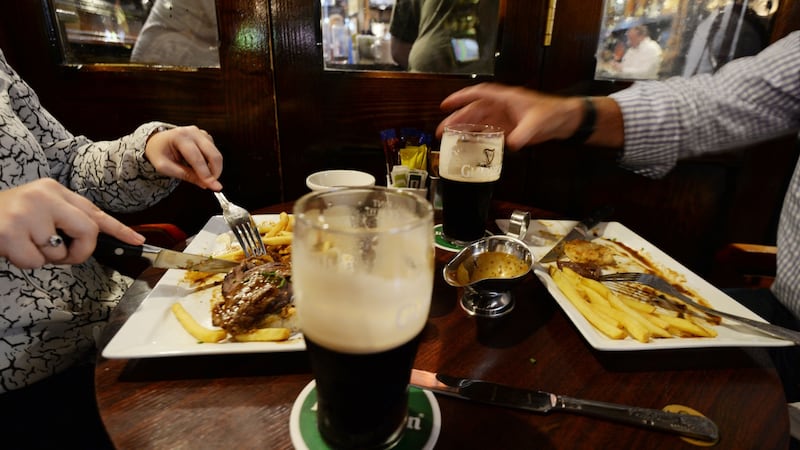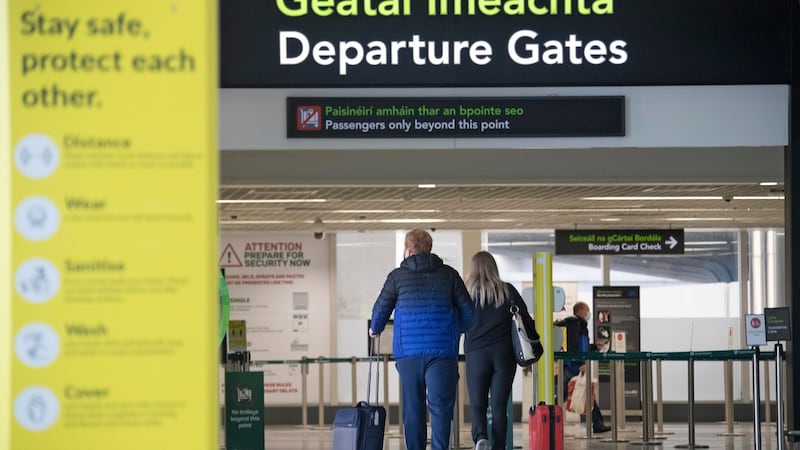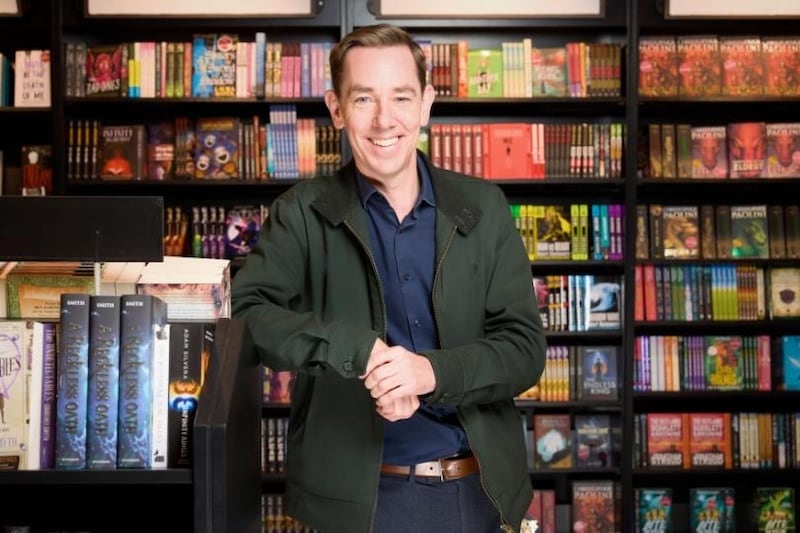Once again, freedom beckons. The targets have been hit – most of them – and the figures are going the right way. Upbeat politicians are talking up the prospects of lifting lockdown, and even the public health officials are less grim-faced than usual.
With the Tánaiste reportedly “sick to death” of running around the park, gyms could open next month. Domestic tourism is back on the cards for June, and Ministers are talking openly about restarting foreign travel by the end of the summer.
The nightmares of last January seem so far away. We have vaccines. The sun is shining, the parks are full, and the people are hungry for the yoke of lockdown to be lifted. What could go wrong?
Quite a bit, in the view of many experts. Vaccines. Variants. Vacations abroad. Problems with any of these factors – too few jabs, too many variant cases – could prove problematic.
It's easy to forget the huge disconnect between trends in Ireland and much of the rest of the world. We have the fourth lowest incidence of Covid-19 in Europe; the second lowest ICU occupancy. Thanks to our lengthy lockdown, case numbers have been dropping gently for months.
Yet the virus is raging elsewhere. One million cases a day worldwide. An extra 300,000 cases a day in India, and 2,000 deaths. Curfews in Brazil as hospitals teem and more than 3,000 patients a day die. Over 60,000 cases a day in the US, despite widespread vaccination.
Ireland’s relative stability is the product of our lengthy lockdown; the recent decline in cases is the product of a vaccine “bonus”, as more and more people gain protection against the virus. But we haven’t managed to eliminate cases, which are still almost twice as high as the lowest target we were aiming for back in January. Some Ministers fear they may be edging up again. Take away the lockdown and we’re like a tightrope walker without a safety rope.
As a result, the easing of measures to be announced by Government next week will likely be modest and staggered as much as the public will bear, despite the political posturing and idle speculation of the past week.

Ministers are currently working off the “Resilience and Recovery” plan published in February, which advocated a “cautious, measured” approach to reopening. That meant delaying the full reopening of schools until earlier this month and only small changes to existing restrictions. But with museums, libraries, churches and big construction due to resume business early in May, the pace of reopening is increasing.
So too is the pressure for wider travel freedoms, the resumptions of personal services and an opening up of hospitality. The trick is to keep cases falling while allowing more freedoms, something so far only Israel and the UK have achieved in any meaningful way.
'We don't want to undo the work of the last few months, not after people did the heavy lifting on suppressing the virus'
The plan has hit its limited targets so far by restarting childcare and schools without pushing case numbers up. Most of those most vulnerable to the virus have been vaccinated, and foreign travel has been further restricted to limit the influx of new variant cases.
The testing and tracing system is more agile now; testing capacity has soared; more retrospective contact tracing is being done and more than a quarter of cases are being sequenced as part of the hunt for new variant cases.
Back in March, the National Public Health Emergency Team’s (Nphet) plea for two more months of lockdown to allow more people to be vaccinated won grudging acceptance, especially as the supply of vaccines was repeatedly disrupted. Has anything changed since?
"We don't want to undo the work of the last few months, not after people did the heavy lifting on suppressing the virus," says Sinn Féin's health spokesman, David Cullinane. "But there are opportunities to ease the restrictions, in the context of the public health advice."
Cullinane talks of a “hierarchy of easing”, starting with non-essential retail, outdoor activities and sport, but he says this has to be balanced by beefing up contact tracing, more checks on travellers and an acceleration of the vaccine rollout.
One person in five thinks restrictions should be tightened, not loosened, latest polling shows. But far from easing up now, we should be imposing more restrictions in order to "finish off" the job of suppressing the disease, according to UCC epidemiologist Prof Gerry Killeen.

Killeen is a member of the ISAG group, which has lobbied for a “zero-Covid” strategy since last year. He has never shied away from bleak predictions.
"It just takes one particle of a new virus variant in someone, and we're back to square one," he warns. The Brazilian P1 variant, for example, took eight weeks to "break" the city of Manaus and another eight weeks to "break" Brazil.
“Clearly, this evolutionary process isn’t going to stop anytime soon. If anything worse comes along and we don’t have a vaccine to deal with it, the public health folk are going to start running out of options.”
Killeen believes we should close meat plants and non-essential retail – “€2 shops and coffee bars” – and carry out high-frequency rapid antigen testing in supermarkets and other potentially risky environments so that case numbers can be reduced to below 100 a day by the end of May.
Current case levels don’t give public health teams a “fighting chance” of tracing outbreaks, he maintains. At our current level of 300-400 cases a day, “P1 would get pretty big before we noticed it”.
We've been here before, of course. Almost exactly a year ago Ireland stood on the precipice of the first great reopening in this pandemic. "We need two more weeks", then taoiseach Leo Varadkar declared on May Day, warning that lifting the lockdown immediately could result in the country going "back to square one".
A phased reopening proceeded and was even speeded up as the epidemiological situation improved. By late June, all the elements were in place for a “staycation summer”.
On the face of it, things went well. Case numbers fell to a handful per day for a while in late June. And while thousands on the east coast headed west for their holidays, there was no sign they brought the disease with them.
Under the surface, though, the dynamics of disease transmission were changing all the time. By the end of July, the figures had started to edge up slightly; they would continue to rise, faster and faster, until a second lockdown was imposed in October.
Months later, a study by scientists at UCD and St Vincent’s Hospital revealed what had happened. The original variants of the first wave had been stamped out by the first lockdown, but these were being replaced by new variants imported from abroad.
We are in a different and better position now, notably through the vaccination of over 1.2 million of the population
Ireland’s second wave began from variants of the virus linked to those found outside Ireland, “suggesting multiple introductions through travel during the summer of 2020,” the study found.
A second reopening was effected at the start of last December, with disastrous results. In hindsight it is easy to see what went wrong this time. Cases had not been pushed low enough during the second lockdown to allow for safe pre-Christmas mixing. A combination of indoor congregation, international travel and heavy socialising before and during the holiday gave the virus ample opportunity to spread.
But even this does not explain the disaster that was to unfold. A new variant, B117, had begun to take hold in the UK. It was Christmas Eve before it was identified in Ireland, due to the length of time it takes to sequence virus cases and identify variants.
The more transmissible UK variant ripped through the population, and Ireland went from best in Europe to worst within weeks. Just as in the Spanish flu epidemic of a century ago, more people died in a later wave than in the first.
We are now in a different and better position, notably through the vaccination of more than 1.2 million of the population. We can also learn from the experience of other countries. Israel has built on its vaccine rollout success with clear rules on the benefits accruing to the fully immunised and a bias towards outdoor activities. Chile, despite also vaccinating a big proportion of its population, is suffering another surge of cases, possibly because it opened up too soon.

Denmark has laid out a detailed timetable for re-opening. Bars and restaurants are re-opening and football crowds returning thanks to the use of a digital "corona passport". This phone app shows Danes whether they have had a negative test result within the previous 72 hours, a certificate of vaccination, or proof of a previous infection two to 12 weeks earlier.
Denmark is only slightly ahead of Ireland on vaccination but is more confident of future supplies. The other difference is that Denmark didn’t suffer a third wave in the winter, while our record-breaking post-Christmas surge shattered morale and created a crisis of confidence that has persisted.
Given the caution that abounds among those making the decisions, it is certain the pace of reopening will be heavily influenced by vaccine rollout
Cullinane believes the Government should focus on keeping out new variants while opening up within the State. It should also stick to the advice it gets from Nphet “by and large”, though he adds: “there’s always room for nuance”.
Killeen would like mandatory hotel quarantine to apply to all countries, rather than the current list of designated countries. “The system has to be comprehensive. There’s no such thing as half a quarantine.”
But what about the hard cases that have arisen quickly in the newly expanded Irish system? Killeen says Australia employs "managed solutions" in some cases to allow for, say, compassionate visits by residents of hotel quarantine to sick relatives.
Vaccines “will make a difference,” he acknowledges, but they need to be given the opportunity to work before variants arise that can undermine their effectiveness. “We should grip this opportunity in time, because we don’t know what the future will hold.”
Given the caution that abounds among those making the decisions, it is certain the pace of reopening will be heavily influenced by vaccine rollout. While this is proceeding, plans for further acceleration remain wrapped in a fog of uncertainty. It is clear the majority of the population won’t be fully vaccinated until the autumn.
At this stage, therefore, we may have to accept that August will be the new June – and that our best hope of a real summer might be an Indian summer.


















